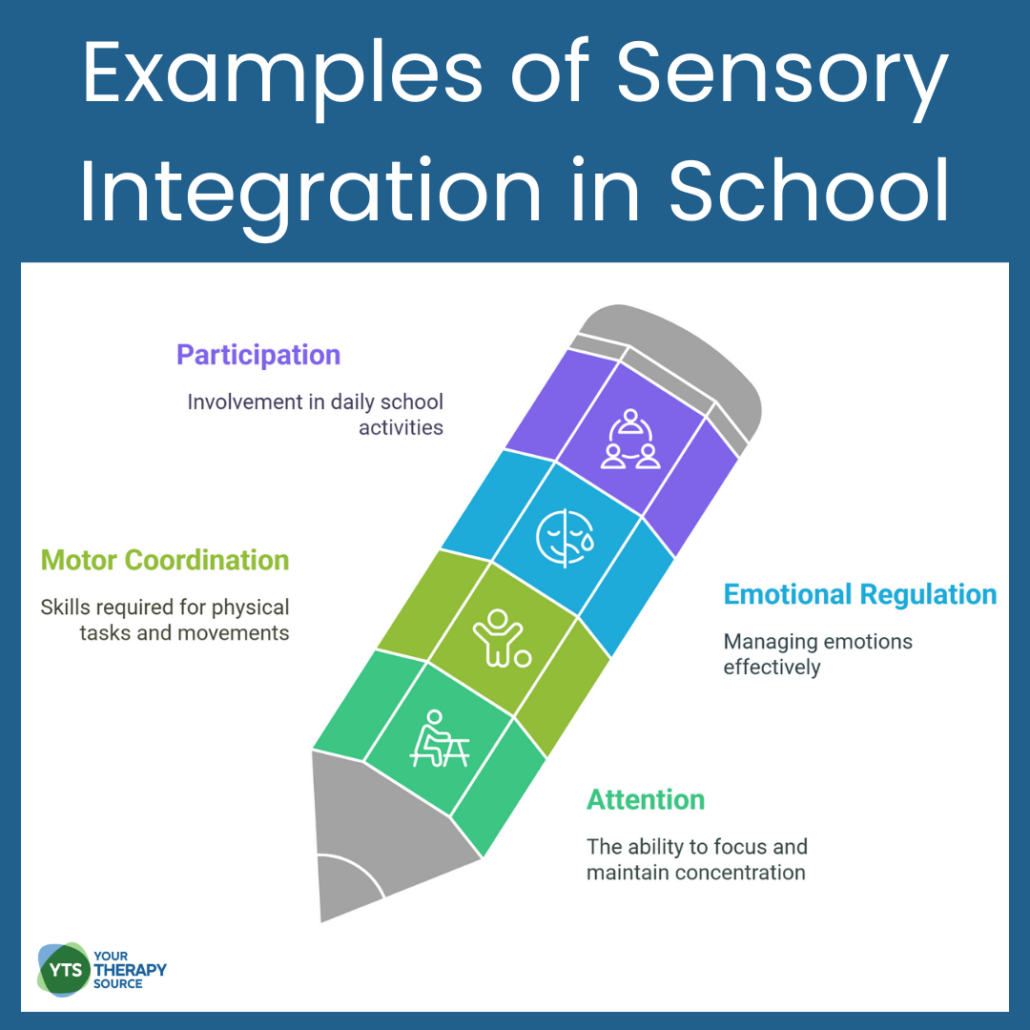Sensory Integration at School
Supporting students’ ability to learn, engage, and participate in school is essential for educators, occupational therapists, physical therapists, and parents. Sensory integration at school plays a crucial role in a child’s success in the classroom, influencing attention, motor coordination, emotional regulation, and participation in daily activities. Despite its significance, the use of Ayres Sensory Integration® in school-based settings has been limited. Learn more about the role of sensory integration in education, its alignment with school-based interventions, and how professionals can integrate sensory-based strategies into school environments.
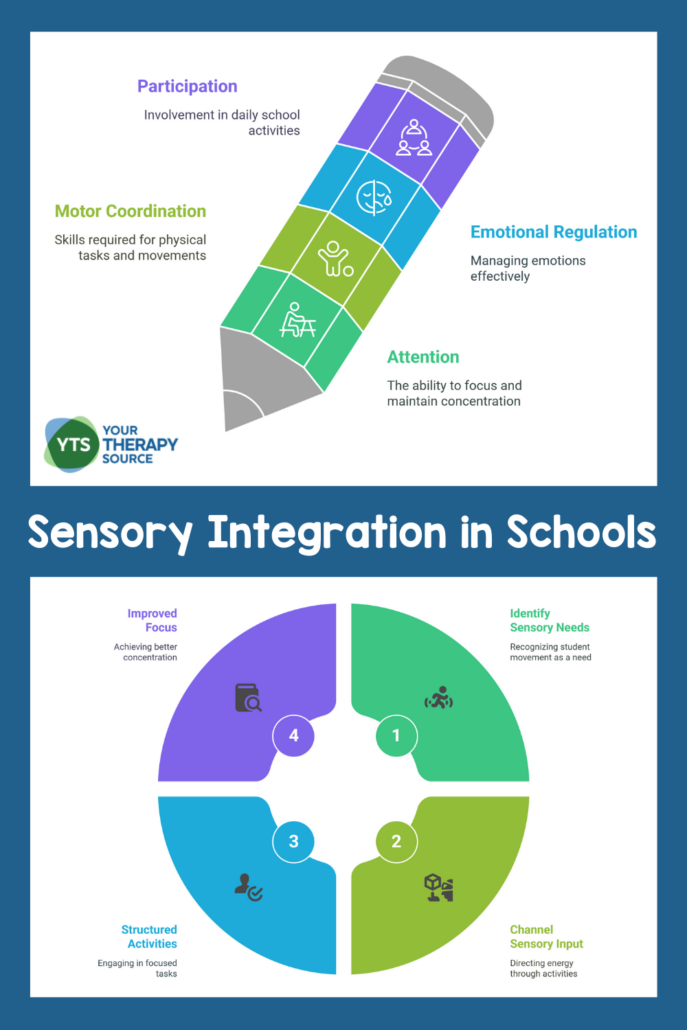
What is Ayres Sensory Integration®?
Ayres Sensory Integration® (ASI) is an approach developed by Dr. A. Jean Ayres that focuses on helping children process and respond to sensory input more effectively. It promotes functional and adaptive behaviors by using structured, sensory-rich activities. Unlike simple sensory-based strategies, Ayres Sensory Integration® is a comprehensive intervention that engages children in active, meaningful participation to improve their ability to regulate, organize, and interact with their surroundings.
This approach benefits children with sensory processing challenges, including those who struggle with balance, coordination, posture, and motor planning. These foundational skills are necessary for academic tasks such as handwriting, following multi-step directions, and participating in group activities.
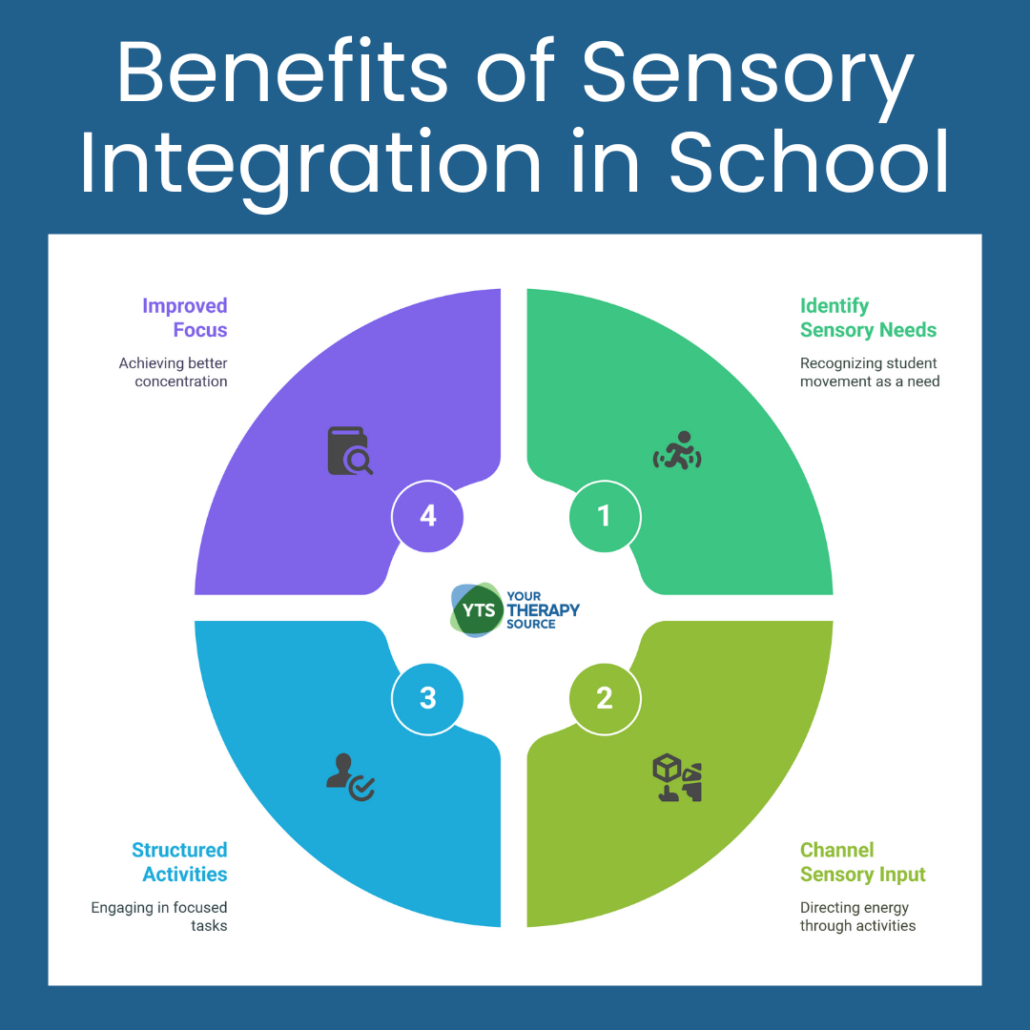
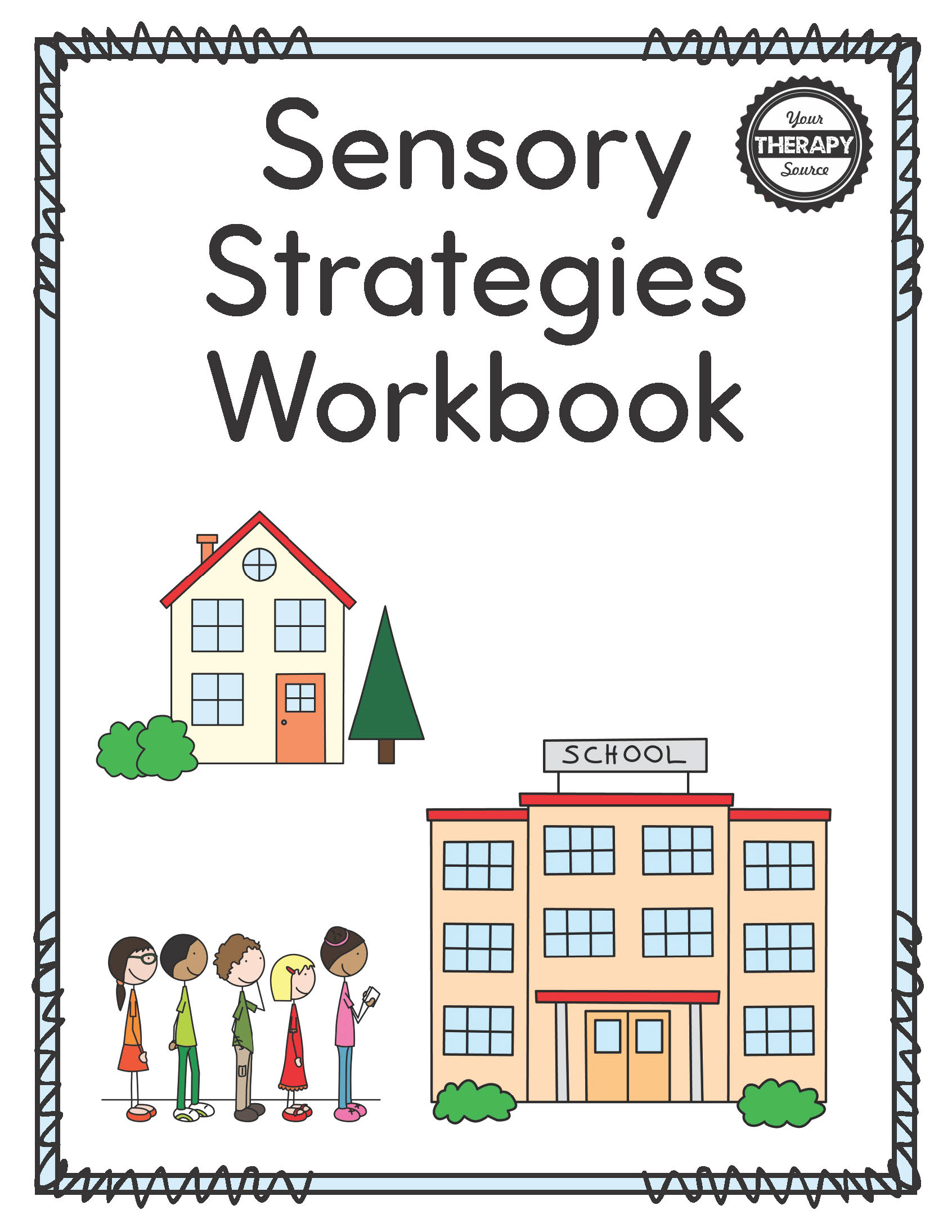
Sensory Strategies Workbook
Sensory Integration and Self-Regulation
Self-regulation is the ability to manage emotions, behaviors, and attention in different situations. Many students experience challenges with self-regulation due to difficulties processing sensory input. Some children become overstimulated in noisy or visually busy environments, while others have trouble staying alert and engaged because they do not receive enough sensory input.
Sensory integration supports self-regulation by helping children develop better ways to interpret and respond to sensory information. Engaging in activities that provide the right balance of sensory input can improve emotional control, attention, and participation in learning.
Ayres Sensory Integration® helps children regulate their responses to sensory input through specific intervention principles:
- Providing sensory opportunities – Encouraging controlled exposure to a variety of sensory experiences, such as movement, touch, and deep pressure, in a structured and playful manner.
- Offering a just-right challenge – Ensuring tasks are neither too difficult nor too easy, promoting engagement and success.
- Facilitating active participation – Engaging children in meaningful activities that require adaptive responses, rather than passively receiving sensory input.
- Supporting self-regulation and organization – Helping students learn how to recognize and respond appropriately to sensory information, leading to improved attention and behavior in the classroom.
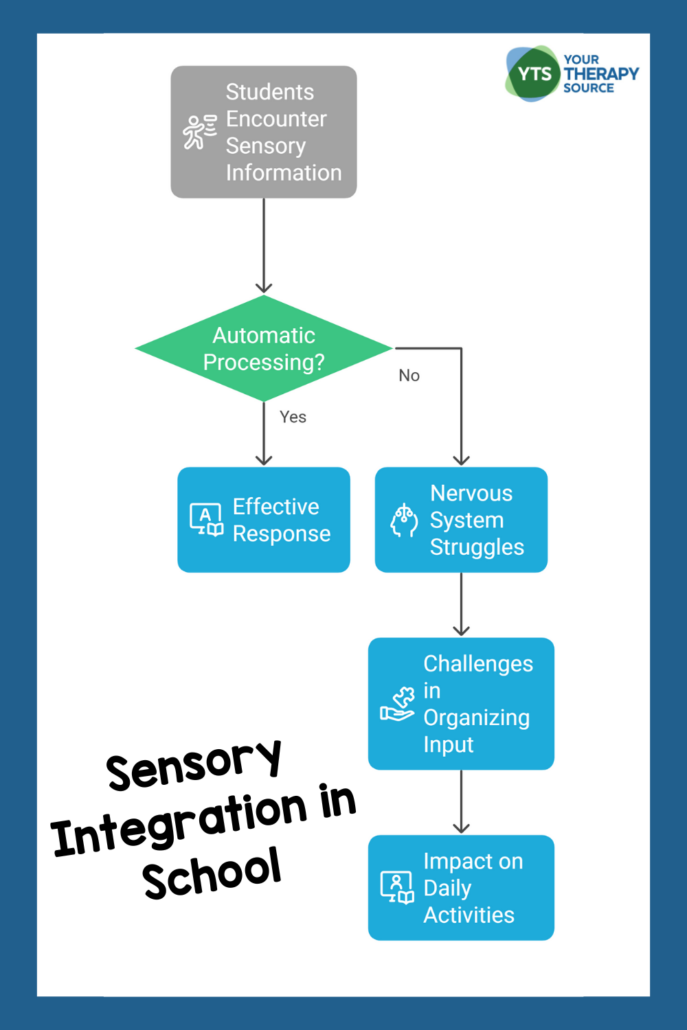
Is Ayres Sensory Integration® Appropriate in a School Setting?
There has been debate about whether Ayres Sensory Integration® should be used in schools or reserved for clinical settings. Research supports the integration of sensory integration principles into school-based occupational and physical therapy services because sensory processing challenges directly impact a child’s ability to engage in classroom activities.
In a school setting, Ayres Sensory Integration® can be implemented using a tiered approach.
- Whole-school or classroom level – Educators and therapists collaborate to create sensory-friendly learning environments. This may include classroom design modifications, movement breaks, and teacher training on sensory needs.
- Targeted small groups – Students who require additional sensory support benefit from structured movement-based activities or environmental modifications tailored to their needs.
- Individualized support – Students with significant sensory challenges receive direct intervention from occupational or physical therapists using Ayres Sensory Integration® strategies to improve regulation and participation.
Education Laws and Sensory Integration at School
Educational laws support the inclusion of sensory-based interventions within school settings.
- The Individuals with Disabilities Education Act (IDEA) ensures that students with disabilities receive appropriate support to access their education, including related services such as occupational and physical therapy. Sensory integration strategies can be included when they impact a child’s ability to learn.
- The Every Student Succeeds Act (ESSA) introduced the Multi-Tiered System of Supports, which encourages schools to use early intervention and whole-school strategies to support diverse learning needs, including sensory processing differences.
- Least Restrictive Environment (LRE) principles guide schools in providing sensory-based supports within the general education setting whenever possible, with more intensive interventions provided only when necessary.
Schools are encouraged to provide proactive support to all learners, and Ayres Sensory Integration® principles align with these educational policies.
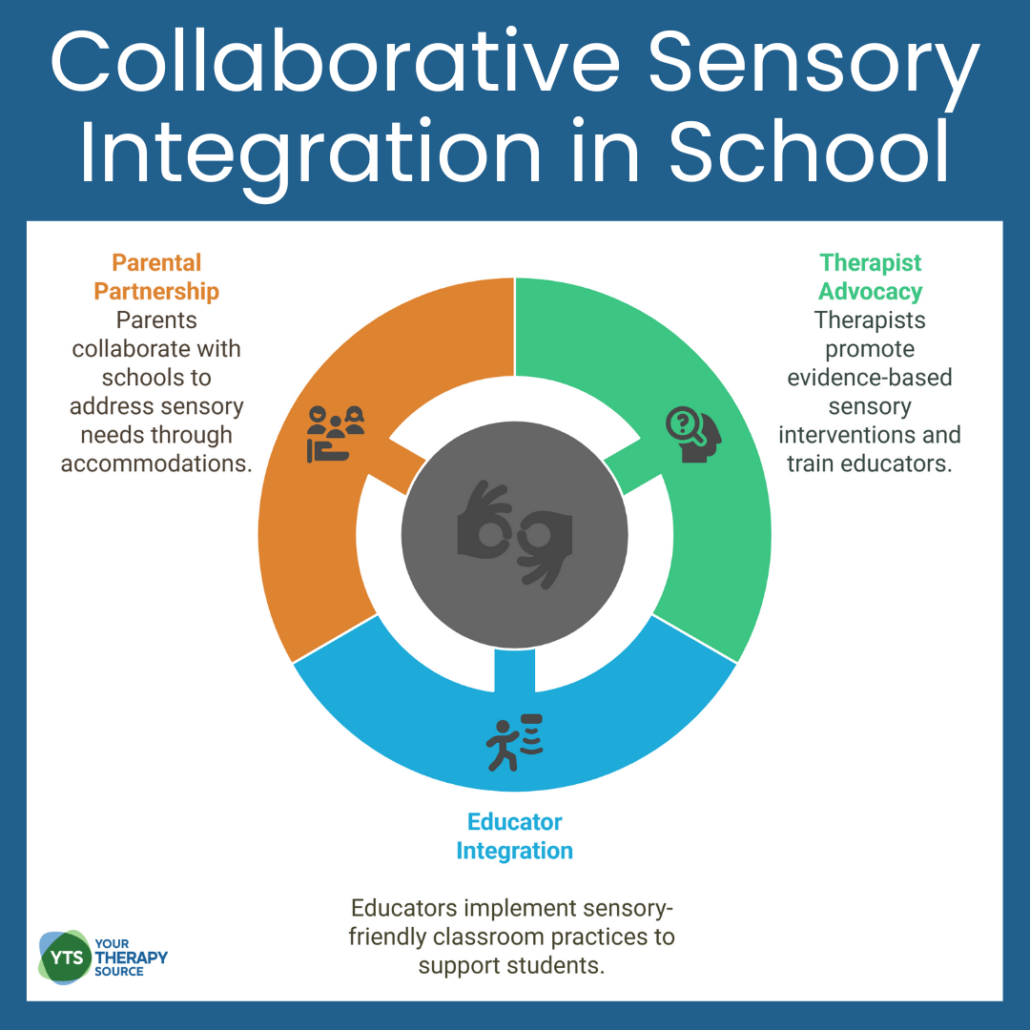
Action Steps Moving Forward to Incorporate Sensory Integration at School
To increase the use of Ayres Sensory Integration® in schools, professionals can take the following steps.
Occupational and physical therapists can:
- Advocate for Ayres Sensory Integration® as an evidence-based school intervention that aligns with educational laws.
- Provide training and resources for teachers on recognizing sensory needs and implementing classroom-based strategies.
- Collaborate with educators to develop sensory-friendly environments, such as incorporating movement breaks and modifying classroom setups.
- Implement a multi-tiered approach that includes consultation at the whole-school level, small group interventions, and individualized therapy when needed.
Educators can:
- Learn about sensory processing and its impact on student behavior and learning.
- Incorporate sensory-friendly classroom strategies, such as flexible seating, movement breaks, and designated quiet areas, to help students regulate and stay engaged.
- Work with therapists to identify sensory-based supports that improve focus, participation, and learning outcomes.
- Use observation and data collection to track the effectiveness of sensory strategies for individual students.
Parents can:
- Communicate with teachers and therapists about their child’s sensory challenges and support their needs at home through movement breaks and self-regulation strategies.
- Advocate for Ayres Sensory Integration® strategies in Individualized Education Programs (IEPs) or 504 Plans to ensure students receive the support they need at school.
- Partner with educators and therapists to reinforce sensory strategies consistently across home and school environments.
Reference
Whiting, C. C., Schoen, S. A., Bundy, A., Lane, S. J., Mailloux, Z., Roley, S. S., … & Schaaf, R. C. (2025). Occupational therapy using Ayres Sensory Integration® in school-based practice: A call to action. American Journal of Occupational Therapy, 79, 7901347020. https://doi.org/10.5014/ajot.2025.050971
